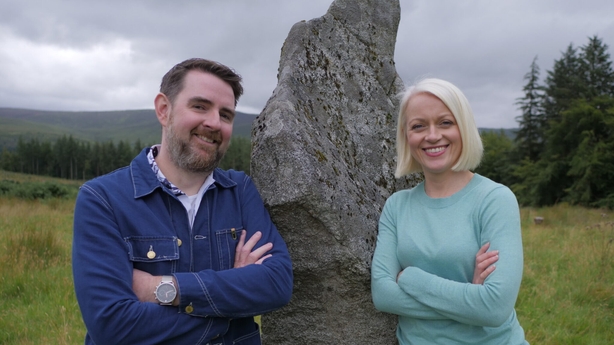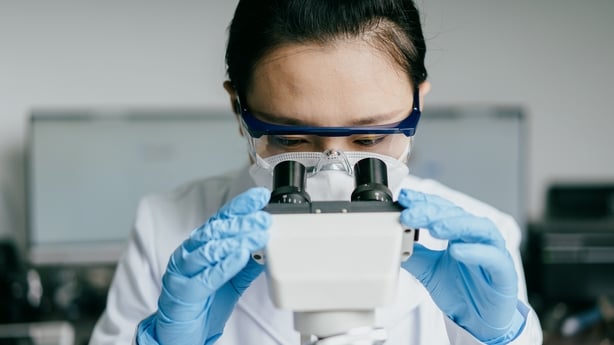For Fergus McAuliffe, science has always been a source of fun and fascination. From experiments in the classroom, to morning quizzes with his dad on the way to school, science has been as much about storytelling as facts and figures.
Studying Environmental Studies in UCD before earning his PhD, McAuliffe says he always had a love for "the natural world" and figuring out how the planet.
Sharing this knowledge with society at large, he says, is all about finding the human element.

In 10 Things to Know About, the presenter will join Kathriona Devereux and Jonathan McCrea in telling just some of the incredible stories that Ireland has to offer when it comes to scientific advancement.
"We're in this really nice position to tell the story of all these efforts," he says. "It's about getting across how complex some of the problems are, but then using storytelling and a narrative, and introducing researchers from all over Ireland, to help audiences understand these stories."
"The better that you understand an issue, the more you feel that you can do about it. I think that's one of the key messages of the show."
From the scientific survival skills employed by two men stranded in the depths of the ocean, to the Irish folklore inspiring modern day research, there are fascinating tales to be told from the scientific community.
In the run up to Science Week, McAuliffe shares three favourites from the upcoming series...

Did you know that Ireland has coral?
When we speak over the phone, McAuliffe has just returned home from a dip in the Irish sea, and is sipping on a coffee to prevent any teeth-chattering. As well as a source of bracing exercise, the sea, he says, is of vital importance to Ireland in terms of both climate and culture.
"The real map of Ireland, as in the territory we own, shows that we own ten times more sea that we do land. When we think of Ireland, in that way, we're actually a really big country."
In episode five, viewers will be introduced to PhD student Erica Krueger, a member of the research centre in iCrag (Science Foundation Ireland Research Centre for Applied Geosciences), who is delving deep into Ireland's watery boarders, and studying the treasures beneath.
"In Ireland, in our territory, we have cold water corals. These are corals that are much deeper down; they could be 300-400 metres deep, so they're in complete darkness. There's not much research on them, but we do know that, like many other species, these corals are under threat from things like climate change and changing ocean currents."
"The more that we can research all marine territory, and have a better sense of the biodiversity that's out there, the better we can manage a response to climate change."

The deepest successful sub-marine rescue happened off the coast of Cork
In a segment called Curious Chronicles, McAuliffe will share one of the most nerve-shredding survival stories in history.
In 1973, Roger Chapman and Roger Mallinson were in a small submarine off the coast of Cork, laying telephone cables onto the seabed. As it was resurfacing, things went terribly wrong.
As part of the vessel flooded, they were immediately dragged to the bottom of the sea, leaving the two men to turn their scientific know-how into essential survival skills.
"They knew there was going to be a rescue mission but they didn't know how long it was going to take," explains McAuliffe. "They were in complete darkness in a tiny submarine, so to preserve oxygen they didn't speak to each other."
The two men put their brains together and decided to lie down at the top of their vessel, allowing the carbon dioxide created with every exhale to fall below.
In total, they lay in dark silence for 84 hours: "The crazy thing about it all is that, when they were rescued, there was 12 minutes of oxygen left."

Irish mythology is playing a part in science
"There are examples of how Ireland, and Irish culture, has been playing a really strong role in science. In episode two, there's a fascinating story of this gene that can be used to better understand ageing."
Discovered by a group of Japanese scientists, the gene was named NANOG - inspired by Tír na nÓg, the realm of everlasting youth and beauty from Irish folklore.
"This particular gene plays a big role in stem cells, which are essentially cells that haven't specialised yet, so they're almost in a state of perpetual youth. They then named that gene after the story of Oisín and Niamh.
"I just found that fascinating, how culture from our island has pervaded into worldwide science."
10 Thing to Know About airs Mondays at 8:30pm on RTÉ One.

